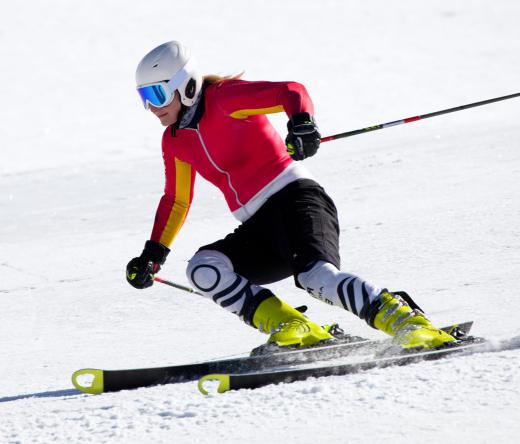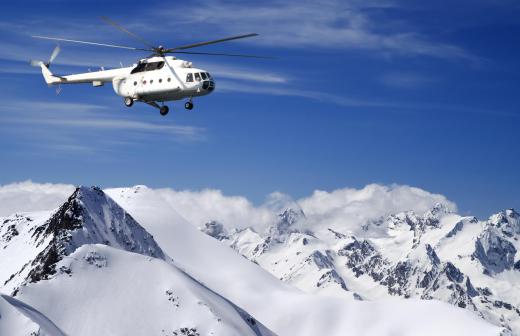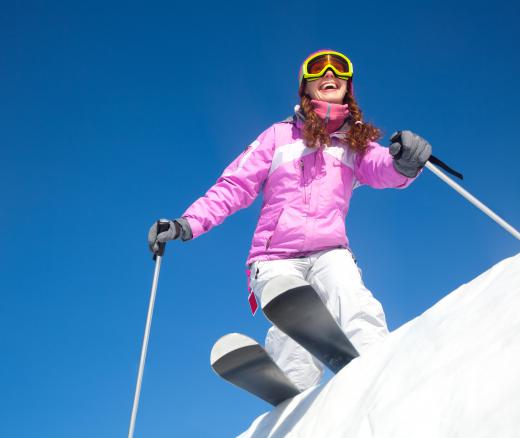As any downhill skier knows, in order to go down a ski slope, you have to first get to the top, or at least part of the way there. Fortunately for skiers and snowboarders, there are many different ways to go up the slope. Conventional methods of ascension include surface lifts such as the rope tow or t-bar, and aerial lifts like gondolas and various kinds of chair lifts. For those who prefer a personal lift, vehicles are also used to get to the top of the slope, particularly when speed is of the essence, or to reach remote locations.
Many beginning skiers and snowboarders took their first runs down the ski slope with the help of a rope tow or t-bar lift. These surface lifts are easy for beginners to use, and can be much safer than areal lifts. A system of motorized pulleys runs up the slope, and a rope or cable is pulled between them. As the rope loop of cable is wound between the lower and upper wheels of the lift, skiers and snowboarders are pulled along.

In the rope tow version of the lift, skiers ascend the ski slope by holding on to the rope itself, or to handles attached at even intervals. This is often used by novice skiers, since there is no hardware to injure a skier who falls on the way up the slope. A t-bar lift is a slightly more complex version of the rope tow, with the addition of a metal bar in the shape of a T attached to the cable. Two skiers or snowboarders can rest the cross bar against their backside and allow the t-bar to push them right up the slope.

For longer slopes, aerial lifts are generally used. One popular areal lift is the gondola. A gondola is an enclosed cabin attached to an overhead cable. Gondolas are sometimes called cable cars for this reason. The cable is strung between two or more towers, and huge motors pull the gondola cars along. Passengers board and disembark the gondola cars at stations at the bottom and top of the ski slope, and enjoy a smooth, scenic ride between stations.

For smaller groups of skiers, a chair lift is another quick method of ascension. Skiers and snowboarders wait in a line at the bottom of the ski slope for an open chair. These chairs, like small, open-air gondolas, run up the hill attached to cables. Skiers and boarders line up as the chair swings in behind them, and all sit down on the chair to ride it up the slope. Chair lifts generally hold two to four passengers, and sometimes have a movable safety bar which can be lowered during the trip up the ski slope for added safety.

When the ski patrol needs to get up the mountain in a hurry, or when skiers and snowboarders want to reach a remote ski slope, motor vehicles provide a good solution. Snowmobiles allow the ski patrol to quickly reach trapped or injured skiers anywhere on the slope. Helicopters can carry a number of skiers and snowboarders to remote ski slopes where they can often find undisturbed powder and breathtaking views as they descend.
